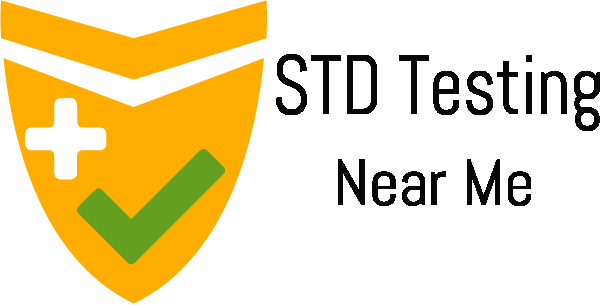Yes, chances of contracting HIV by swallowing cum or semen is a fraction compared to HIV through oral sex (blowjob) which is at 0.04% that is 1 in 2500 cases. As seen from the numbers the contraction rate of the receptive partner(giving a blowjob) is higher, compared that with the insertive partner (getting a blowjob) which is about zero.
Although semen of a healthy person contains citric acid, free amino acids, fructose, enzymes, phosphorylcholine, prostaglandin, potassium, and zinc. The semen of an infected person or the ejaculatory fluid contains the virus and is infectious. So, there are chances of getting contracted by HIV, if one swallows cum infected with HIV.
However, the risk of transmission depends on a number of things. The first and the foremost is the source of the semen or the ejaculatory fluid, the individual, whose semen it was if that person is infected or not. If that person is uninfected or HIV negative, then the question of HIV infection does not arise at all.
The second thing is which part of the body of the exposed person came in contact with the semen or the ejaculatory fluid. Some of the common parts of the body which can get affected are which come in contact especially the skin of the hands or the other parts of the body. If the skin is intact, that is, there is no scratches or cuts or bruises or other injuries, the risk of transmission of HIV infections is nil or zero even if the person whose semen it might be HIV positive.
What if HIV infected semen/cum comes in contact with your eyes or other body parts?
Some of the other parts of the body getting exposed to semen while oral sex are
- The mucous membrane,
- The conjunctiva of the eyes (theoretically yes)
- The Mouth
- The Throat
Also read: Oral sex causing STD and its prevention
In the mucous membrane of the vagina or the rectum. The risk of transmission is greatest for the unprotected, that is without the condom for the receptor. The receiving partner for anal sex, tend to be the highest risk. But the real risk remains with another mucus membrane. If a person is HIV positive and if they are under treatment and their virus levels in the blood, which is typically measured by the viral load is typically undetectable, then one cannot say that the semen cannot be completely negative of the virus. The risk of transmission comes down. This essentially means that if the viral load is very low sometimes we even, undetectable it would then be very difficult to pass the HIV virus on to someone else.
*Viral load” is a term that describes how much virus a person living with HIV has in their body.
What about Pre-cum? If it can cause HIV?
So doing a sex act, pre-cum has a tiny chance of contracting HIV, even at a higher viral load.
Other bodily fluids contributing to the spread of HIV
Bodily fluids other than semen from a person with HIV can transmit HIV are as follows
- Blood
- pre-seminal fluid (pre-cum)
- rectal fluids
- vaginal secretions
- breast milk
Other ways by which HIV spreads
Studies on the risks of oral sex reveal that the chances of HIV being passed from one person to another depending on the type of contact. HIV is most easily spread or transmitted through unprotected anal sex, unprotected vaginal sex and sharing injection, drug equipment. Unprotected sex means sex in which no condoms other barriers or treatment as prevention methods different ways of using HIV drugs to lower risk of HIV transmission are used.
Oral sex involves contact between the mouth and the genitals, it includes giving or receiving licking, sucking or biting of the vulva vagina, clitoris, and labia or lips penis or anus. Under most circumstances, oral sex poses little to no risk of spreading HIV. Oral sex may not be risk-free but it has been shown to be much less risky than the activities described above. HIV is present and female sexual fluid, vagina secretions, male sexual fluids come in pre-cum and blood.
HIV cannot be spread through saliva spit. There must be a way for HIV virus to enter the HIV negative person bloodstream such as mouth sores or genital ulcers. For HIV transmission to be possible, it is possible to get other sexually transmitted infections or diseases STI’s or STDs such as syphilis, herpes, gonorrhea and human papillomavirus (HPV) through oral sex.
HIV treatment, as prevention, does not protect against STD’s, other than HIV, oral sex is a low-risk activity. For HIV, factors that increase the risk of HIV transmission through oral sex include having bleeding gums, mouth ulcers, gum disease genital sores and other sexually transmitted infections.
How to prevent the smallest of a chance of getting contracted by HIV through semen/cum
Avoid taking ejaculated semen or come in the mouth, if you have bleeding gums, mouth ulcers, open sores or gum disease. Do not have oral sex if you or your partner have mouth sores such as oral herpes lesions.
Use a dental dam or cut open condom for oral sex on a woman cunnilingus or for rimming licking
So to conclude, first if there is any situation where you believe where you have been being exposed, the wise thing is to get yourself screened for STD near you. Secondly, the risk of HIV transmission depends on whether the source is HIV positive. Which part of the body has been exposed to this semen or the ejaculatory fluid or if there were any cuts or bruises on the skin or if you are engaged in unprotected anal, vaginal or oral sex.
References
https://www.britannica.com/science/semen
https://www.cdc.gov/hiv/basics/transmission.html


